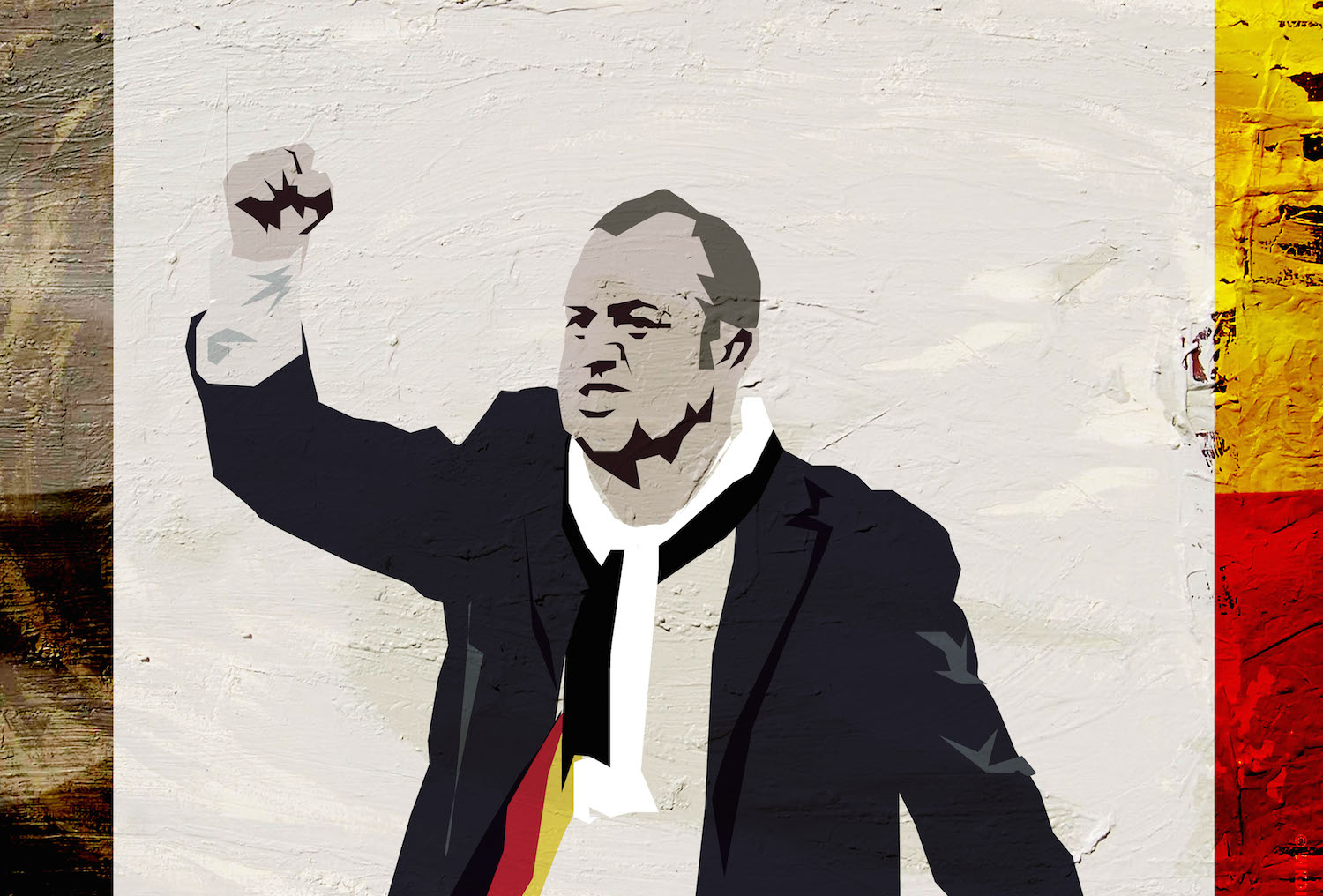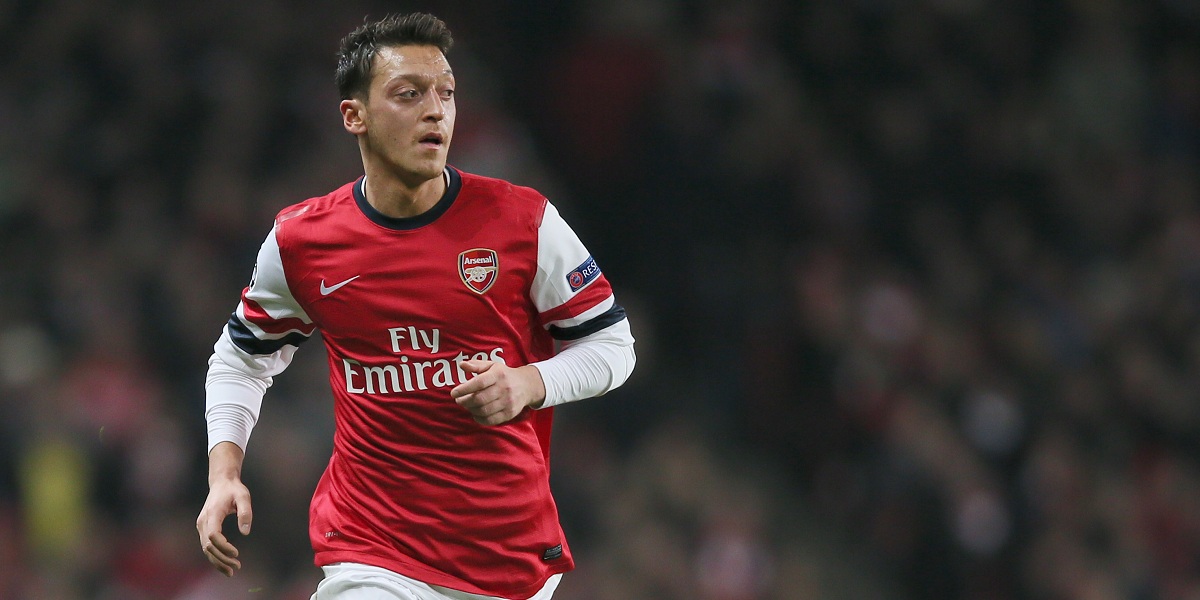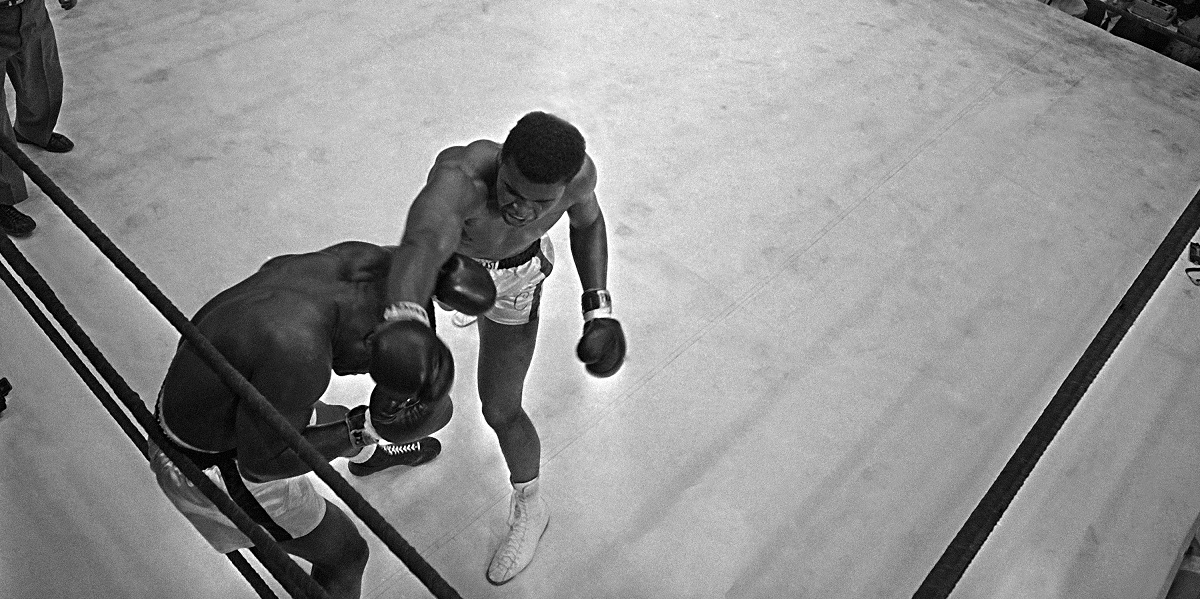*Published in October 2015 issue.
When I was a teenager growing up in the Netherlands, Holland never qualified for tournaments. I recall November 18, 1981 as if it were yesterday: Michel Platini’s free-kick sailing into our net in Paris, while on the goal-line the Dutch keeper Hans van Breukelen and sweeper Ruud Krol are already glaring at each other in mutual accusation. Goodbye World Cup 1982. All those unhappy days (I will spare you the details of December 1983 and November 1985) came back again on September 6 when Turkey thumped Holland 3-0. “There it goes, there it goes,” lamented the Dutch radio commentator Jack van Gelder, working his 300th and last Holland game, after Turkey got their second. “It’s a blunder by Daley Blind, it’s a blunder by Jasper Cillessen. I don’t know what you’re going to do in July, bring along a small TV set to the campsite…… How deep can you fall? It’s blunderrrr.”
Like most of us Dutch fans, Van Gelder had lived through happier times. The team that now looks unlikely to qualify even for the bloated 24-nation Euro 2016 came within a penalty shootout of the World Cup final only 14 months ago. And we would have won the World Cup of 2010 if Iker Casillas’s toes hadn’t stopped Arjen Robben’s shot late in the final. More broadly, Holland have long been one of football’s great nations. How, to echo Van Gelder, could we fall so deep? And is this the start of a long dark age?
First let’s rewind, because Holland’s decline in quality has been happening for some years now. Even in South Africa in 2010, the Dutch back four was so weak that coach Bert van Marwijk posted the thuggish defensive-midfield partnership Nigel de Jong and Mark van Bommel as a sort of defence in front of the defence. The way we played at that World Cup wasn’t “Hollandse school”, as we lovingly called our traditional fast-passing overlapping attacking style (only foreigners ever called it “total football”), but it worked.
When Louis van Gaal succeeded Van Marwijk as manager in 2012, he tried to resurrect the “Hollandse school” (of which he had long been the de facto headmaster). But the turning-point for him came in Paris on March 5, 2014, during a friendly against France. The French striker Karim Benzema accelerated away from the Dutch central defender Bruno Martins Indi, who had obviously never seen anything move that fast before. Holland’s keeper Cillessen, similarly outpaced, had barely begun to move when Benzema’s shot rocketed into the net behind him.
That seems to have been the moment when Van Gaal decided that his defenders were so weak he would need five of them in Brazil. His 5-3-2 formation was a break with national tradition and caused much anxiety in the Netherlands. But in Brazil it worked. Not only could the five defenders cover each other’s mistakes, but sitting back on the counter-attack allowed the Dutch to launch their one great weapon Arjen Robben from the halfway line. With 50 mostly empty metres to run into, and space to get up to top speed, Robben was unbeatable. Nobody in the Netherlands has forgotten his sprint that left the pretty nippy Sergio Ramos standing in Holland’s semi-miraculous 5-1 thumping of Spain. We may need to treasure that memory in the decades to come. Van Gaal’s Holland reached the semis against Argentina, where – for once in full accordance with national tradition – they lost the penalty shootout. (Cillessen, now 26, has still never stopped a penalty in his professional career.)
After the World Cup Van Gaal said it would be better for Holland if he stayed their coach, instead of joining Manchester United. “But Dutch soccer doesn’t have the highest priority. I myself have the highest priority. Most people don’t dare say that, but I do.”
Van Gaal was leaving a sinking ship. His successor (and one of his many enemies), Guus Hiddink, wanted to restore Holland’s traditional 4-3-3. But Hiddink was 67 and seemed it. According to Voetbal International magazine, he didn’t speak much with the players, once didn’t show up to a weekly staff meeting (he was later discovered to be in his holiday home in the south of France), and one morning in the team hotel asked his staff what the programme for the day was. They told him that his team talk was scheduled to start in 15 minutes. This summer Dutch FA officials visited him in his holiday home, and persuaded him that it was time to say goodbye.
Hiddink’s assistant Danny Blind took over. I know Blind from various football quizzes in the home of an Amsterdam comedian where he and I used to battle for first prize. (One year he won after reciting the entire lineup of the Feyenoord team that won the European Cup in 1970.) The former Ajax sweeper, and father of Manchester United’s all-rounder Daley, is a gentle, understated, likeable man who loves football. But before taking over Holland, he had been a head coach for just one unhappy season, ten years previously at Ajax, and that spell had ended with his sacking.
Like Hiddink, Blind stood for the restoration of 4-3-3 and Hollandse school. That’s how he tried to play in his first two matches in charge in September. His debut was against Iceland, a country whose entire population (323,002) is less than one-third the number of registered footballers in the Netherlands. It turned out to make no difference. Holland lost 0-1 thanks to two childish blunders: Martins Indi slapped Iceland’s striker Kolbeinn Sigthorsson in the neck and was sent off, and soon afterwards Gregory van der Wiel unnecessarily tripped someone in the penalty area, handing Gylffi Sigurdsson the easiest task in football: taking a penalty at Cillessen. It was Holland’s first defeat in a European Championship home qualifier since 1963.
After the match Blind broke with footballing etiquette by blaming the disaster on Martins Indi personally: “I’ve got no idea what got into him, this is extremely unprofessional.” It’s true that the Porto reserve probably shouldn’t be playing for his country. But the same goes for most of the Dutch team. For perhaps the first time since the 1960s, Holland have a lot of mediocre footballers. When Holland lost to Ireland in the “Drama of Dublin” in 2001 and missed the World Cup of 2002, we had excellent players who had just got a bit spoiled, lazy and tired. This time the problem is more fundamental: we lack quality. “Too Bad for European Championship”, was the ruthless, true headline in the Algemeen Dagblad newspaper after the thumping by Turkey.
For years we had depended on our great generation born in 1983 and 1984: Robben, Wesley Sneijder, Robin van Persie, Rafael van der Vaart, Nigel de Jong, Klaas-Jan Huntelaar plus a decent supporting cast. But now the “golden triangle” of Sneijder-Van Persie-Robben is rusting fast. Sneijder’s years of living like a rock star seem to have caught up with him; Van Persie, so often injured, has gone from Greek god to looking like your dad with a bad back; and Robben, transformed by Bayern Munich’s physical preparations from “Man of Glass” to Iron Man, limped off against Iceland with a groin injury.
There was nobody of remotely comparable quality to replace him. The Dutch generation born from 1985 through 1989 produced exactly zero world-class players. (Poor Van der Wiel, a Paris St Germain reserve who hadn’t played an official match in 96 days before the Iceland travesty, was born in 1988.) Since 1990, some better players have been born – though arguably the most promising of them, AS Roma’s midfielder Kevin Strootman (date of birth 13/2/1990), has just had his third knee operation in 17 months and may never become the complete all-round midfielder that we saw in him.
A bigger country could have afforded the loss of Strootman and even Robben. But the Netherlands, with its 17 million inhabitants, is the smallest of the front-rank football nations. It is bound to produce the odd weak generation (like the one born from 1977 through 1982). That’s not the surprise. The surprise is that this time Holland hasn’t been able to fall back on its traditional virtues of superior tactical intelligence and organization.
Holland for years had been the cleverest team in international football. In the words of Johan Cruijff, the father of the Hollandse school: “Football is a game that you play with your head.” Some Dutch internationals have been mediocre (Gio van Bronckhorst, aged 35, very nearly lifted the World Cup aloft as captain in 2010) but they all knew where to position themselves. All had absorbed the Dutch notion of football as collective choreography, a dance aimed at opening space when you have the ball and closing it when you don’t. Brains carried us through.
But when a football culture is successful, it tends to get complacent and stop thinking. That’s what happened to Holland. Albert Capellas, former coordinator of Barcelona’s youth academy who was an assistant for years at the Dutch club Vitesse Arnhem, told me that Dutch and Spanish thinking about attack were quite similar. However, he said, Spanish defensive strategy was much more advanced. Look at how Spanish teams moved to shut down space when the opponents had the ball, without needing to post a reinforced defence of the kind Holland did in 2010 and 2014.
The Dutch stopped learning some years ago. The Hollandse school, with its obsession with possession, has degenerated into endless harmless passing. Willem Vissers, respected football writer for De Volkskrant newspaper, lamented after September’s humiliations: “That eternal game of square passes and back passes, the game that has turned Dutch football into an almost archaic pastime, a sort of occupational therapy.”
Germany and Spain in particular have produced advanced versions of the Hollandse school (thanks in large part to learning from Holland). Other countries have also improved positionally. Most have made huge data-driven advances in physical preparation – a field in which Dutch football has lagged behind. Van Gaal cares deeply about the physical, but many other Dutch coaches in recent years have sent out teams that look like Teletubbies playing against superheroes. (The average age of the current Ajax team is about 21, but most of the players are so spindly that they look younger.)
I’d like to end with some good news. I won’t say that we can still get to the Euro, if we win our last matches against Kazakhstan and the Czech Republic in October, and Turkey loses at least once, and in the playoffs we play one of the really terrible teams who will finish third in the other groups. Even that depressing path is too improbable even to think about. Rather, the happy news is that brilliant Hollandse school football still exists. The only problem is that it’s now played by our archrivals Germany.




